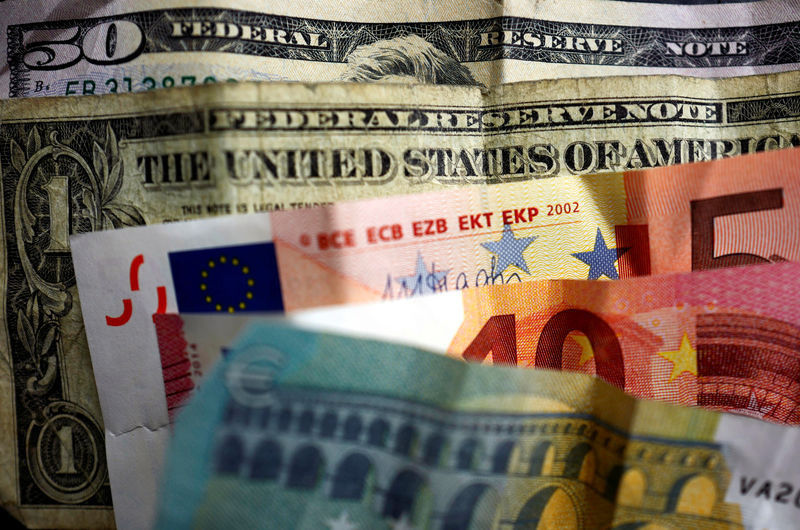Forex
Dollar edges lower ahead of key data; ECB meeting looms large


© Reuters.
Investing.com – The U.S. dollar drifted lower in early European trading Monday, at the start of a week that includes key U.S. growth and inflation data as well as the first major central bank meetings of the new year.
At 04:00 ET (09:00 GMT), the Dollar Index, which tracks the greenback against a basket of six other currencies, traded 0.1% lower at 102.984, retreating from recent one-month highs.
Dollar drifts lower ahead of key data
The greenback ended last week on the up as signs of resilience in the U.S. economy prompted traders to rein in expectations of early interest rate cuts by the Federal Reserve.
However, the new week has started with traders banking some profits ahead of the release later in the week of fourth-quarter growth numbers as well as a key U.S. inflation reading.
The government is scheduled to release data on fourth quarter on Thursday, which is expected to come in at 2.0% after a 4.9% increase in the prior quarter.
“Our macro team forecasts above-consensus fourth quarter GDP,” said analysts at ING, in a note. “This could see the market further pare back Federal Reserve easing expectations this year. The market currently attaches a 43% chance of a cut in March and an easing cycle this year now worth 115bp.”
December’s data is also due on Thursday, and comes after the increased 2.6% in the 12 months to November and monthly prices fell for the first time in more than three and a half years.
ECB meeting looms large
In Europe, traded largely unchanged at 1.0896, as the attention turns to the European Central Bank’s policy-setting meeting on Thursday.
The is certain to keep rates steady, having stopped hikes in October, but investors will be carefully studying the associated comments from President Christine Lagarde as they look for interest rate cuts later in the year.
Traders are currently looking for cuts to possibly start as early as April, but is likely to continue signalling it is too early to discuss rate cuts, especially as she, along with a number of her colleagues, have consistently downplayed expectations for early rate cuts.
“Our baseline view sees EUR/USD hanging around these 1.09 levels as the ECB tries to re-position for a data-dependent approach for future policy,” added ING.
Wednesday sees the release of flash readings for the eurozone, and are expected to show that business activity remains in contraction territory.
traded largely unchanged at 1.2700, with sterling remaining supported despite Friday’s weak release.
U.K. unexpectedly accelerated in December, data released last week showed, implying that the central bank will be slower to cut rates than its peers.
BOJ meeting in focus
In Asia, edged lower to 148.12, with traders cautiously awaiting the conclusion of a meeting overnight, where the central bank is widely expected to maintain negative interest rates and its yield curve control mechanisms.
The devastating earthquake at the beginning of the year is expected to add to softening inflation and sluggish wage growth as reasons the BOJ will maintain its ultra-easy monetary policy, at least for now.
traded just higher at 7.1956, after the People’s Bank of China held its benchmark at record lows on Sunday.
The central bank has limited headroom to loosen policy further, as it struggles to strike a balance between supporting an economic recovery and preventing more yuan weakness.

 Forex3 years ago
Forex3 years agoForex Today: the dollar is gaining strength amid gloomy sentiment at the start of the Fed’s week

 Forex3 years ago
Forex3 years agoUnbiased review of Pocket Option broker

 Forex3 years ago
Forex3 years agoDollar to pound sterling exchange rate today: Pound plummeted to its lowest since 1985

 Forex3 years ago
Forex3 years agoHow is the Australian dollar doing today?

 Cryptocurrency3 years ago
Cryptocurrency3 years agoWhat happened in the crypto market – current events today

 World3 years ago
World3 years agoWhy are modern video games an art form?

 Commodities3 years ago
Commodities3 years agoCopper continues to fall in price on expectations of lower demand in China

 Economy3 years ago
Economy3 years agoCrude oil tankers double in price due to EU anti-Russian sanctions


























